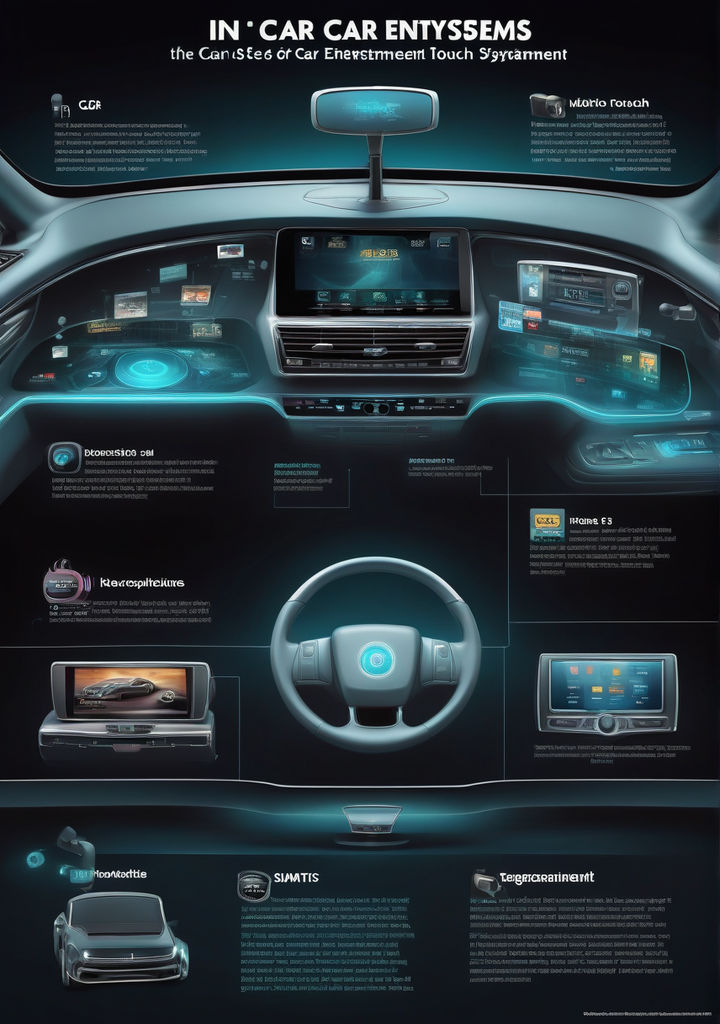
In-car entertainment systems have come a long way from simple AM/FM radios to fully integrated multimedia hubs. As technology continues to evolve, so does the complexity and functionality of these systems, providing drivers and passengers with a seamless blend of information, entertainment, and connectivity. This article explores the history, current trends, and future potential of in-car entertainment systems.
1. The Early Days: From Radio to 8-Track Players
The journey of in-car entertainment began in the 1930s when the first car radio was introduced. This simple device allowed drivers to listen to AM stations while on the road, revolutionizing the driving experience. In the 1960s, 8-track players became popular, offering drivers the ability to listen to pre-recorded music.
Key Milestones:
- 1930s: Introduction of car radios.
- 1960s: Popularity of 8-track players, offering more music choices.
2. The Cassette and CD Era
The 1970s and 1980s saw the rise of cassette players in vehicles, which allowed drivers to create and play their own mixtapes. This was a significant step forward in personalization. The 1990s introduced CD players, which offered better sound quality and convenience, marking a significant leap in in-car entertainment.
Key Milestones:
- 1970s-1980s: Cassette players bring personalization to in-car audio.
- 1990s: CD players offer superior sound quality and ease of use.
3. The Digital Revolution: From MP3 to Bluetooth
The early 2000s ushered in the digital era with MP3 players and auxiliary inputs, enabling drivers to connect their portable music devices directly to the car’s audio system. This was quickly followed by the introduction of Bluetooth technology, which allowed wireless streaming of music and hands-free phone calls, enhancing both safety and convenience.
Key Milestones:
- 2000s: MP3 players and auxiliary inputs change how we listen to music in cars.
- 2000s-Present: Bluetooth technology becomes standard, offering wireless connectivity.
4. Modern In-Car Entertainment Systems: Infotainment at Your Fingertips
Today’s in-car entertainment systems are sophisticated infotainment centers that combine navigation, communication, and entertainment into one seamless interface. Touchscreens, voice controls, and integration with smartphones (via Apple CarPlay and Android Auto) have become standard in many vehicles, allowing drivers to access apps, stream music, and even control their home devices from the car.
Key Features:
- Touchscreens: Large, responsive displays provide easy access to various functions.
- Smartphone Integration: Apple CarPlay and Android Auto offer familiar interfaces and app access.
- Voice Control: Hands-free operation increases safety by reducing driver distraction.
5. The Future: What’s Next for In-Car Entertainment?
The future of in-car entertainment is poised to be shaped by advancements in artificial intelligence, augmented reality, and 5G connectivity. AI could enable more personalized experiences, such as tailored music recommendations and adaptive interfaces that learn your preferences over time. Augmented reality could transform windshields into interactive displays, providing real-time navigation and information. Additionally, 5G will enable faster and more reliable connections, supporting streaming services and cloud-based applications with minimal latency.
Future Trends:
- Artificial Intelligence: Personalized entertainment and adaptive interfaces.
- Augmented Reality: Interactive windshields and advanced navigation features.
- 5G Connectivity: Enhanced streaming and real-time cloud services.
Conclusion
In-car entertainment systems have transformed from simple radios into advanced multimedia hubs that enhance the driving experience. As technology continues to advance, we can expect even more innovative features that will redefine how we interact with our vehicles. From personalized AI-driven experiences to augmented reality displays, the future of in-car entertainment is both exciting and full of possibilities.
FAQ
1. What is Apple CarPlay and Android Auto? Apple CarPlay and Android Auto are systems that allow you to connect your smartphone to your car's infotainment system. They provide a familiar interface for accessing apps, music, navigation, and more, directly from your car's dashboard.
2. How does Bluetooth improve in-car entertainment? Bluetooth allows for wireless streaming of music and hands-free phone calls, reducing the need for physical connections and enhancing convenience and safety.
3. What is the role of AI in future in-car entertainment systems? AI could provide personalized experiences by learning your preferences over time, offering tailored music recommendations, adaptive interfaces, and even predictive navigation based on your habits.
4. Will 5G change in-car entertainment? Yes, 5G's faster and more reliable connectivity will support higher-quality streaming services, real-time cloud applications, and more sophisticated in-car entertainment features.
5. What are the benefits of augmented reality in vehicles? Augmented reality can provide drivers with real-time information, such as navigation cues directly on the windshield, enhancing safety and convenience by keeping critical information in the driver's line of sight.
In-car entertainment systems continue to evolve, blending technology with convenience, and the future looks promising with new innovations on the horizon.

